Idaho is often overlooked for its abundance of mushrooms, but it has a huge variety of fungi for picking and identifying. Throughout the state, there are many different types of mushrooms that grow in various habitats and microclimates.
Some are edible while others are not, so it’s important to know what you’re looking at before consuming any wild mushroom.
Common mushrooms of Idaho include morels, lobster mushrooms, fly agarics, and honeys. They offer an enjoyable experience that can be enjoyed by novice and experienced mushroom hunters alike.
List of Idaho Mushrooms
1. Morels
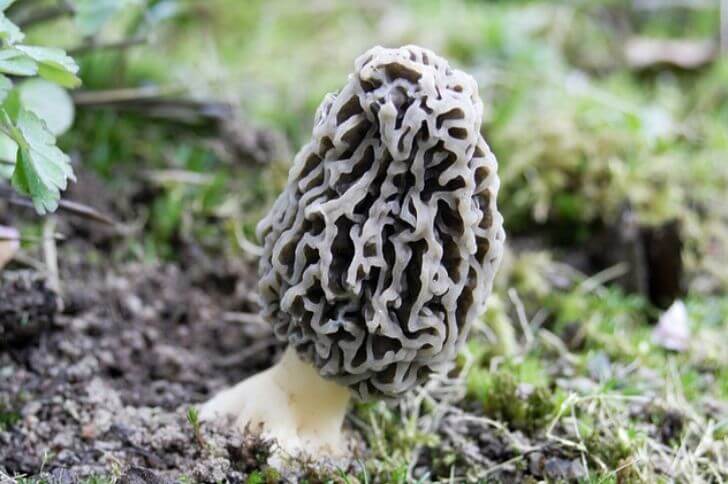
Morels are plenty in Idaho. The moisture and warmth of the state’s environment foster the growth of these fungi species, making them plentiful throughout parts of Idaho such as Boise, Lewiston, Coeur d’Alene, Twin Falls and Sandpoint. Foragers can often find them near streambeds or damp areas with decaying trees or logs.
Common morels in Idaho include:
Morchella snyderi: Found in Western North America, this morel was discovered back in 1938 in Washington, and it has since been found growing in other parts of the western United States including Idaho. The Morchella snyderi is easily distinguishable from other morels due to its distinctive physical features.
The cap of the Morchella snyderi is cone-shaped and covered in ridges that are arranged in a honeycomb pattern. It starts off yellow, resembling the yellow morel and gradually turns grayish brown.
Morchella importuna: Commonly found in woodchips in the North West, the Morchella importuna is an edible mushroom that belongs to the Morchellaceae family. One characteristic of this morel is its dark-colored cap, which can range from grayish-brown to almost black. The cap is usually elogated, which helps tell them apart from other morels.
You can find them on planters, woodchip beds or firepits.
Morchella tomentosa: Also called the gray morels, this morel variety is often found in burnt areas. The mushroom’s honeycomb-like cap grows to about 2 inches wide and is covered with tiny hairs. Color ranges from gray to blackish.
Morchella ulmaria: Discovered in 2012, this morel grows from May and is often found in moist areas. The cap of this mushroom is light brown and rounder compared to other morels. Stems are long with a wide base.
Morchella sextelata: Also found in western North America, morchella sextelata are a member of the black morel family. Its fruiting bodies can grow up to 4.7 inches tall.
They occur in spring or summer in areas that have been affected by fire. When young, they have a velvety surface with pinkish pits. Mature fruiting bodies are brownish.
2. Chanterelles
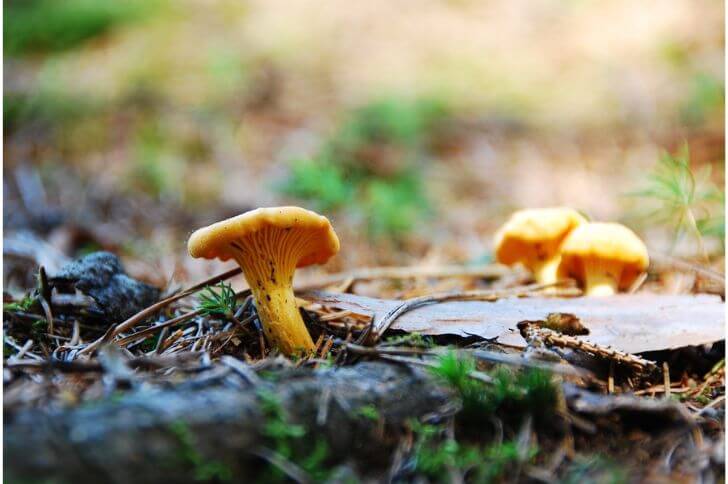
Chanterelles are a type of mushroom native to Idaho that are popular with local foragers. Common chanterelles in Idaho include:
Golden chanterelles:
Are you looking for a mushroom to add some zing to your next meal? Look no further than the golden chanterelle. These mushrooms are easily identifiable by their distinct colors and shapes, making them great for any beginner or experienced mushroom forager.
A golden chanterelle is unmistakable in its bright yellow color, which can range from a faint yellow to a deep orange-yellow hue. The cap of the mushroom is usually funnel-shaped, with slightly incurved edges.
Its stem may be anywhere between one and three inches long. Additionally, when cut in half, the inside of the stem should be white or pale yellow without any discoloration.
White chanterelles:
The key identifying features of white chanterelles include their coloration and shape. White chanterelles have a creamy white color with a lobed cap. The cap grows to about 3.9 inches. Underside does not have caps.
Their stems are usually white or off-white in color with whitish flesh that turns orangish-yellow when cut or bruised.
Black chanterelles:
Black trumpet mushrooms are a type of edible mushroom in Idaho known for their unique, smoky flavor and color. This mushroom has a funnel-shaped cap that is dark brown or black in color and measures up to 4 inches wide.
The stem is usually long, reaching up to 6 inches in height. The flesh of the mushroom also tends to take on a dark hue as well as having an earthy smell when handled.
3. Porcini (Boletus Edulis)
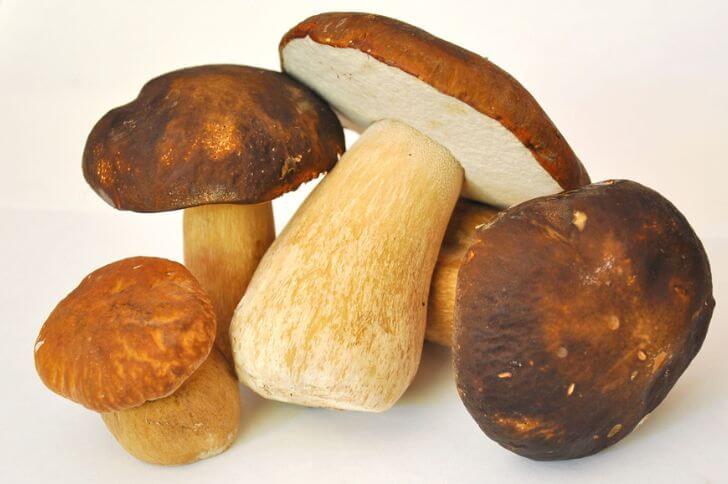
Porcini mushrooms are a popular variety of mushrooms in Idaho. They have an earthy and nutty flavor, and can be used in savory dishes to add an extra layer of flavor.
Also called king bolete or cep, this flavorful and meaty mushroom can be found around beech and oaks.
One way to identify the porcini is by its cap which ranges from a reddish-brown to dark brown color.
The cap is typically smooth with no scales or warts but can sometimes have small bumps on its surface. Another feature that helps distinguish this species is its stem which has a thick base that tapers toward the top.
How can you prepare porcini? I grill the caps and use them in stews or soups. You can also use it as a topping for chicken and fish or fry them.
4. Scaly Pholiota
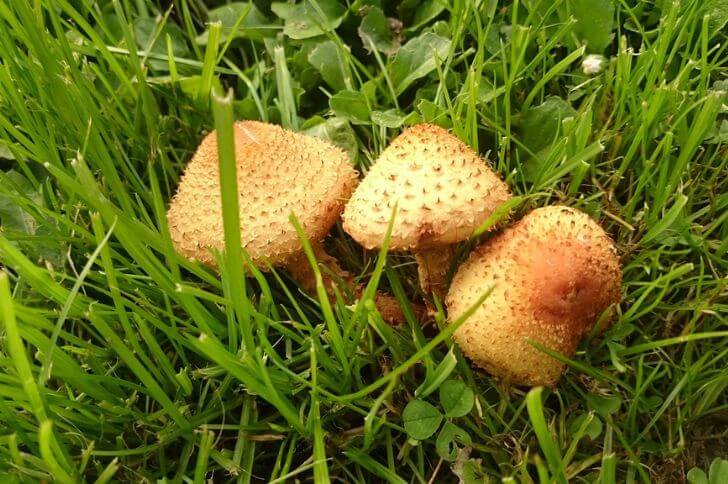
Scaly Pholiota, a type of mushroom found in the western United States, is easy to identify. They are parasitic, growing in tight clusters on conifers. Check the base of living or dead trees. These Idaho mushrooms occur in summer and fall.
They are often recognized by the scaly cap that gives them their name. The cap can range from yellowish-brown to dark brown in color, while the stem may be lighter or darker depending on its age.
Young species have whitish or pale yellow crowded gills while older pholiotas have rusty brown gills. These Idaho mushrooms are inedible.
5. Lion’s Mane
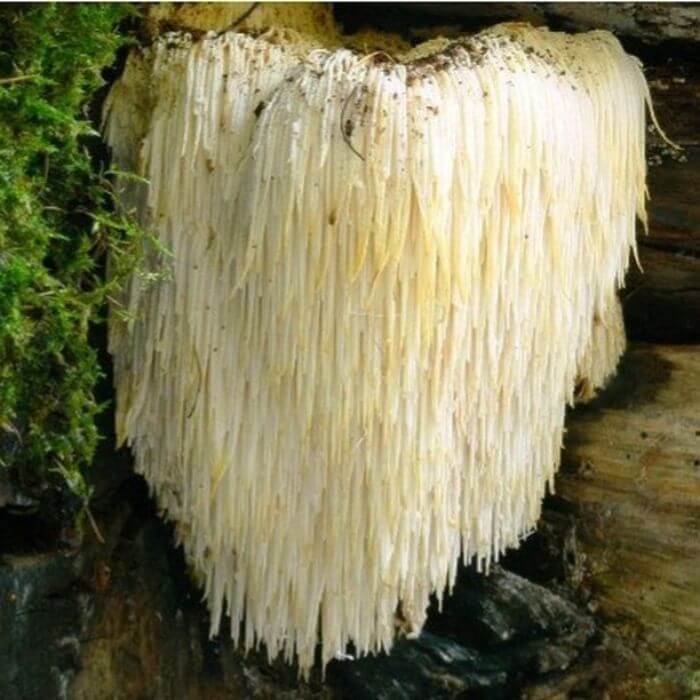
source: nongtrainamxanh
Lion’s mane mushroom is a unique and tasty fungus that is common in fall. It typically grows on hardwood trees such as oak or maple. They have white to light brownish fruiting bodies with long spines that resemble a lion’s mane – hence the name.
The fruiting bodies also vary in size from small to large depending on the age of the mushroom.
What do they taste like? Most mushroomers have likened their taste to sea food; lobsters or shrimp. Note, lion’s mane takes longer to cook compared to other edible mushrooms like chanterelles and morels.
Related Read: Check most common mushrooms in United States
6. Lobster Mushrooms
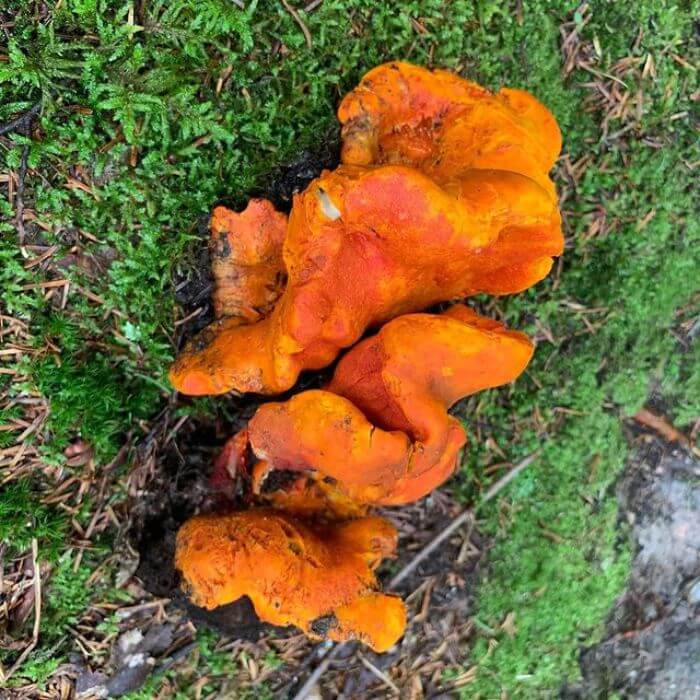
source: shroomholm
Native to the Pacific Northwest, lobster mushrooms have been harvested in Idaho for centuries as a traditional form of nutrition.
A combination of their seafood flavor, along with the meaty texture, makes them an excellent choice for anyone looking to add a little extra flavor and nutrition to their diet.
These mushrooms can be found in various parts of Idaho including forests and meadows – though they are most prominently found within the Boise National Forest due to its humid climate and constant rainfall
These Idaho mushrooms typically have bright red or orange caps. They have a white spore print. How can you prepare lobster mushrooms? You can pickle them, lobster bisque, in sauces, or saute.
7. Honey mushrooms
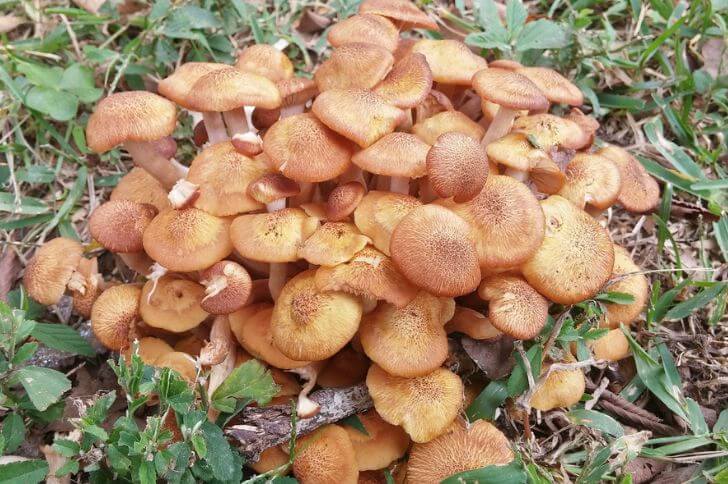
Are there honey mushrooms in Idaho? Yes, honeys or amallaria mellea are common in the Gem State.
They grow naturally at the base of living oaks or stumps. They also pop up in yards. These mushrooms can be easily spotted due to their distinct golden hue that stands out against dark green foliage.
Mature honeys have almost-flat caps that appear wavy due to their close clustering. They can be harvested and cooked up fresh or preserved to enjoy later down the road throughout the winter months.
The subtle sweetness of these delectable fungi make them popular with home cooks as they can be used in an array of dishes such as sauces, soups, salads and pastas.
8. Meadow Mushrooms
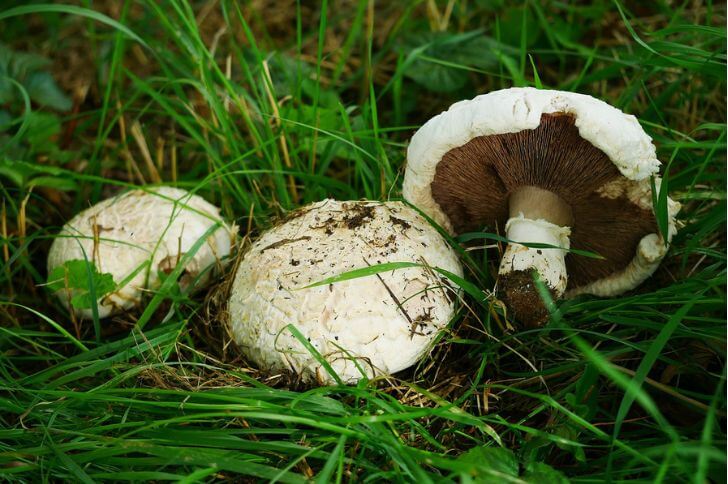
Another type of edible mushroom in Idaho foragers enjoy is the meadow mushroom. With their ‘mushroomy’ taste and meaty texture, they make a delicious addition to any meal. Not only are these Idaho mushrooms incredibly tasty, but they also boast a plethora of benefits!
Meadow mushrooms can be found in meadows, grasslands, and roadside ditches from July to September. They boast of a whitish or gray cap with pink to brown gills on the underside. Its stalk is also grayish, becoming darker with age.
Note, younger meadow mushrooms may have a ring that may disappear as they mature. When cut, meadows have white flesh that is unchanging. If it changes to yellow, discard it.
They grow in fairy rings. If you’re looking for an easy way to add some plant-based nutrition to your diet, consider adding meadow mushrooms to your next dish!
9. Chicken of the woods
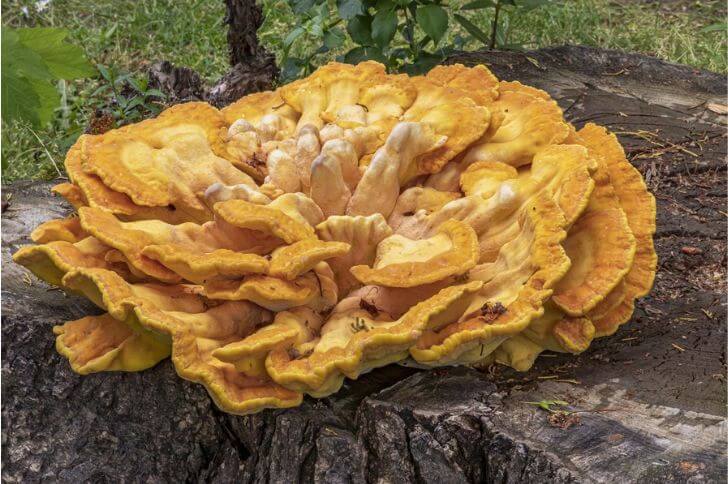
When it comes to foraging for mushrooms, many people think of morel mushrooms or even chanterelles. But there is another type of mushroom popular in Idaho that adds a unique flavor to any dish—the Chicken-of-the-woods Mushroom.
This edible mushroom is native to Idaho and can often be found growing on trees or dead logs of oaks, cherry and beech.
The Chicken-of-the-woods Mushroom has an unusual yellow color with wavy caps that spread outwards in concentric circles.
It has a mild chicken flavor which makes it great for adding to stews and soups, as well as stir fries.
When cooked properly, it can easily replace chicken in virtually any recipe. Not only does this mushroom add incredible flavor and texture, but it’s also incredibly healthy!
10. Saffron Milk Cap
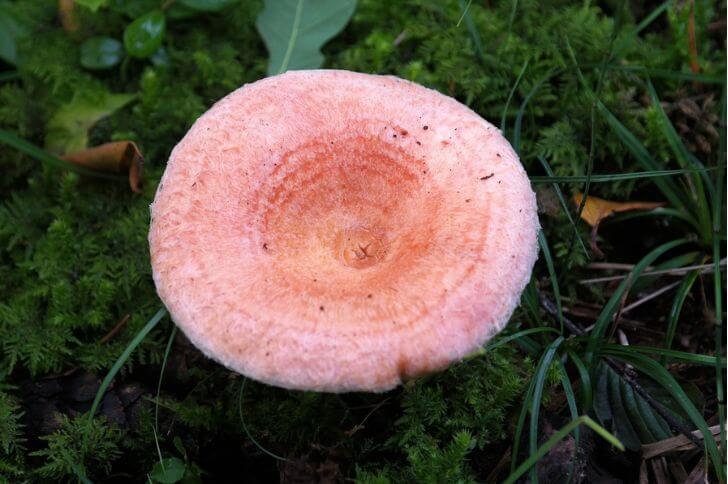
Saffron milk caps (scientific Lactarius deliciosus) are mushrooms that grow on the ground and are usually seen under trees, especially near conifers such as pine and spruce.
They are characterized by their orange to red color and unique bruising. The tops of these mushrooms are smooth and become sticky after rains.
These mushrooms of Idaho are convex shaped with a depressed middle in older mushrooms. When sliced, these milk caps bleed and turn greenish. They can also be fermented or dried for later use.
11. Phaeolus Schweinitzii (Dyer’s Polypore)
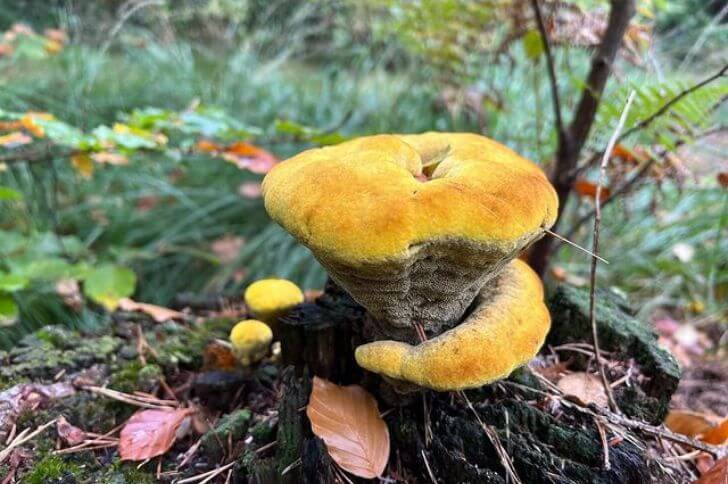
source:clivehillphotography
Phaeolus schweinitzii, also called the dyer’s polypore or velvet-top fungus, is a species of mushroom that belongs to the family fomitopsidaceae. This mushroom has unique features that make it possible for easy identification.
The fruiting body of dyer’s polypore is large, with a cap that ranges in size from 2.75-11.8 inches in diameter. The cap color varies from yellow-brown to reddish-brown and has a velvety texture on top.
One can also identify this shelf fungus by looking at its pores, which are orangish in young fungi turning olive brown in maturity.
12. Russula brevipes (Short-stemmed Russula)
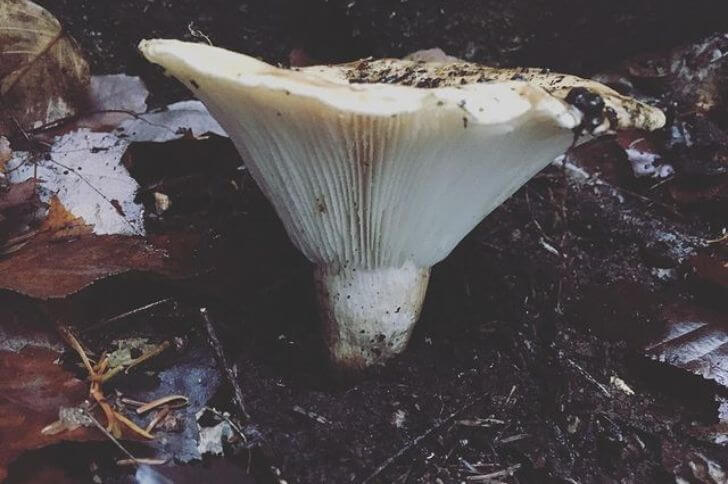
source: marielou.boivin
Russula brevipes is a type of mushroom that belongs to the family Russulaceae. Also called the short-stemmed russula, this Idaho mushroom is common in summer and autumn.
It has a distinct cap with a diameter of 3-12 inches, which is convex at first but flattens out with age. The color ranges from white to dull yellow, and the surface is smooth. Note, like the saffron milk cap, this russula has a depressed center.
The gills are white and can be easily separated from the cap without breaking or tearing them. They also have a faint foul smell.
13. Sarcodon Imbricatus (Scaly Hedgehog)
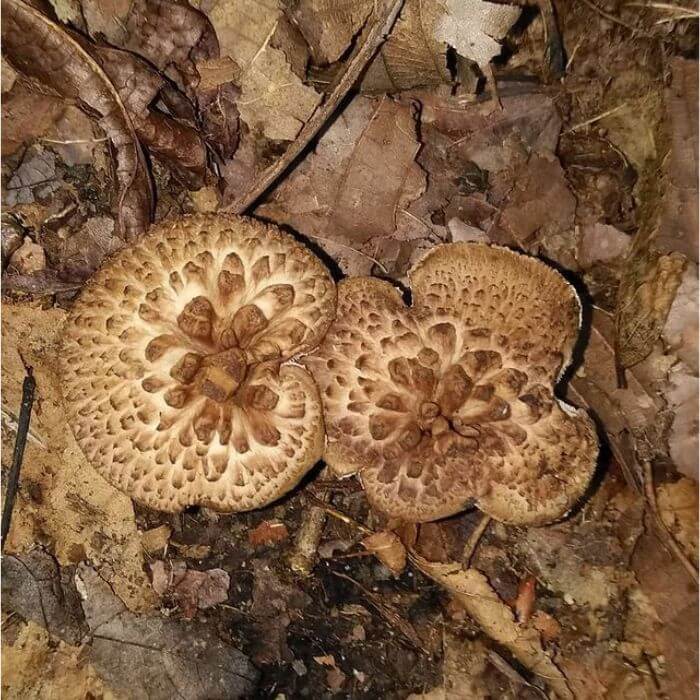
source: deannabrownpix
Sarcodon imbricatus, commonly known as the scaly hedgehog, is a type of mushroom that is widely distributed across Idaho. It can be confused with the old man of the woods. Typically, this mushroom grows to 12 inches wide.
The cap color varies from light brown to dark brown. Its scales are dark and often overlap each other like fish scales.
Underneath, scaly hedgehogs have little spines instead of gills. Though classified as inedible, we do not recommend them because they can be confused with the old man of the woods.
14. Hydnellum Peckii (Bleeding Tooth Fungus)
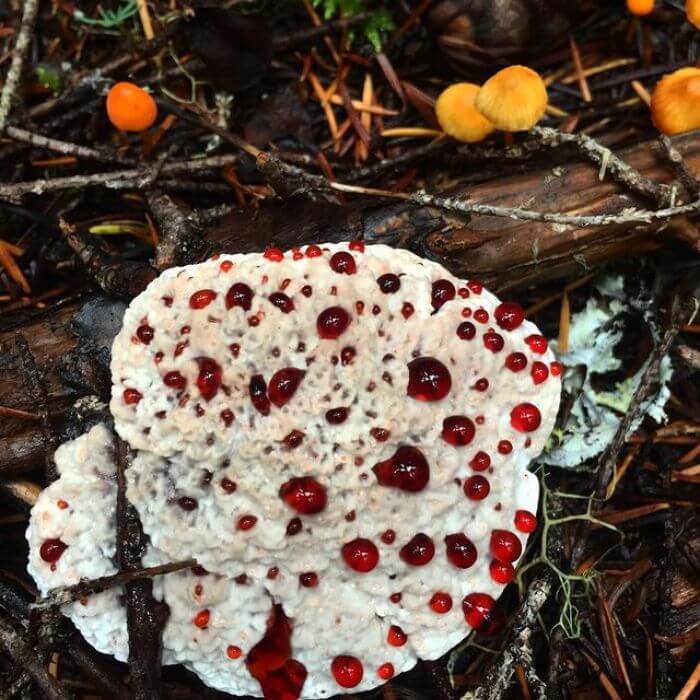
source: voiceforfungi
Hydnellum peckii, colloquially known as bleeding tooth fungus, is a unique species of fungi that is easily identifiable by its distinct appearance.
The fruiting body of this fungus has a vase-shaped and bears teeth-like spines that appear to be oozing blood. The cap has a velvety texture and can range in size from 1.1-3.9 inches in diameter.
The fruiting bodies tend to emerge in late summer through fall and can often be found growing singly or in small clusters.
Additionally, the flesh of this mushroom does not bruise or change color when handled.
15. Lycoperdon marginatum (Peeling puffball)
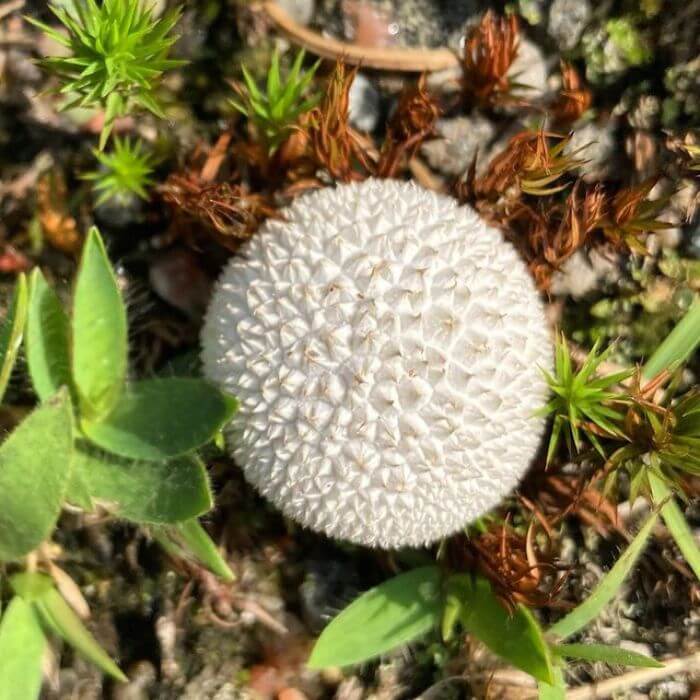
source: east.bay.tramps
Are there puffballs in Idaho? Apart from the western giant puffballs, the peeling puffballs are also common in the Gem State.
Scientifically called lycoperdon marginatum, this fascinating fungus belongs to the agaricaceae family.
One of the most striking features is its shape. The fruiting body appears as an inverted pear with spines. When mature, this puffball splits open at the top, revealing a mass of spores that are dispersed by wind or raindrops.
FAQs
What are common edible mushrooms in Idaho?
- Morels
- Chanterelles
- Field mushrooms
- Chicken of the woods
- Western giant puffballs
Are Idaho coral mushrooms edible?
Crown-tipped corals are common in Idaho and are classified as edible. Though they can be consumed raw, we recommend you cook them before consumption. Other coral mushrooms in Idaho are inedible.
sources:
Hi There,
My name is Jenny. I’m the Chief Editor at Try Green Recipes and besides making yummy and healthy foods for my kids, grandkids, and friends. I’m new to the blogging world but I believe what I have to share is unique and will bring joy to your home. If you are adventurous and want try something tasty, let’s get started.

